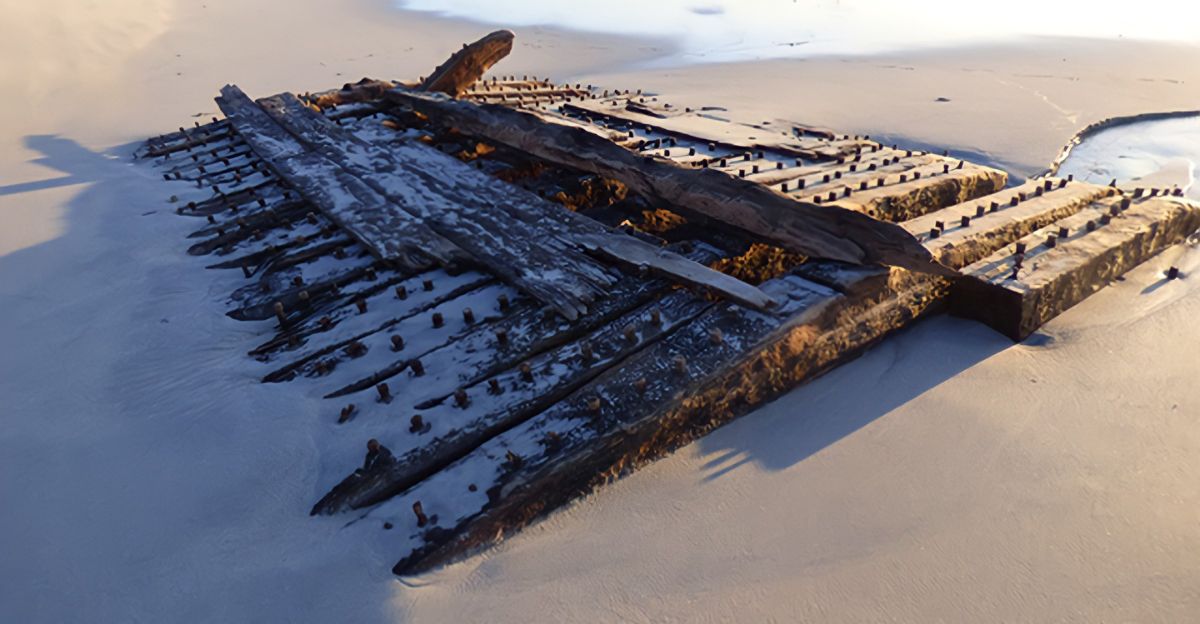
After lying hidden beneath the windswept sands of Scotland’s remote Orkney Islands for more than two centuries, the secrets of this lost warship are finally ready to be uncovered. The discovery was made purely by chance, when a local schoolboy, out for a walk after a fierce winter storm in February 2024, stumbled across the weathered ribs of a wooden ship exposed along the shore of Sanday.
Archaeologists, local historians, and the island’s close-knit community now have the opportunity to unravel this 250-year-old find.
Sanday, The Cradle of Shipwrecks

The island of Sanday, with its treacherous waters and shifting sands, has claimed more than 270 vessels since the 1400s. Over centuries, merchantmen, navy ships, whalers, and even emigrant ships have met their end along Sanday’s restless 20-square-mile coastline.
When winds and tides wrecked ships, the island’s residents have always been quick to help any survivors.
The Unexpected Discovery

What seemed at first to be just another piece of driftwood quickly transformed into a historic revelation as the island community, local archaeologists, and heritage experts rallied to investigate. “I would regard it as a lucky ship, which is a strange thing to say about a ship that’s wrecked,” said Ben Saunders, the senior marine archaeologist at Wessex Archaeology.
“I think if it had been found in many other places, it wouldn’t necessarily have had that community drive, that desire to recover and study that material, and also the community spirit to do it.”
The Ship’s Identity

Maritime archaeologists partnered with Dendrochronicle dendrochronology experts, who analyzed the ship’s oak timbers by studying their growth rings. This revealed that the wood was felled between 1748 and 1762 and originated from the south and southwest of England.
A local team of 20 volunteer researchers, led by Wessex Archaeology, discovered that the ship was the Earl of Chatham, a whaler of London origin with a storied past as the Royal Navy frigate HMS Hind. “Wessex Archaeology worked closely with the community of Sanday to discover the ship’s identity, which shows that communities hold the keys to their own heritage,” said Alison Turnbull, director of external relations and partnerships at Historic Environment Scotland.
Dig It! 2024 Archaeology Honor

In December 2024, the wreck was named one of Scotland’s five most amazing archaeological finds of the year by ‘Dig It!’, a prominent hub for Scottish archaeology. Thanks to swift action by Orkney Islands Council, which secured a substantial grant from the National Heritage Memorial Fund for preservation, the intact timbers are now undergoing state-of-the-art analysis at the Sanday Heritage Centre.
Community Curiosity

Findings like these often spark curiosity among residents, and everyone wants to get involved. Farmers lend their equipment to carefully remove fragile sections, while others work tirelessly to keep the wood soaked in fresh water, delaying decay until preservation resources arrive.
“Wessex Archaeology worked closely with the community of Sanday to discover the ship’s identity, which shows that communities hold the keys to their own heritage. It is our job to empower communities to make these discoveries and be able to tell the story of their historic environment,” said Ben Saunders, Senior Marine Archaeologist at Wessex Archaeology.
The HMS Hind and Empire’s Edge
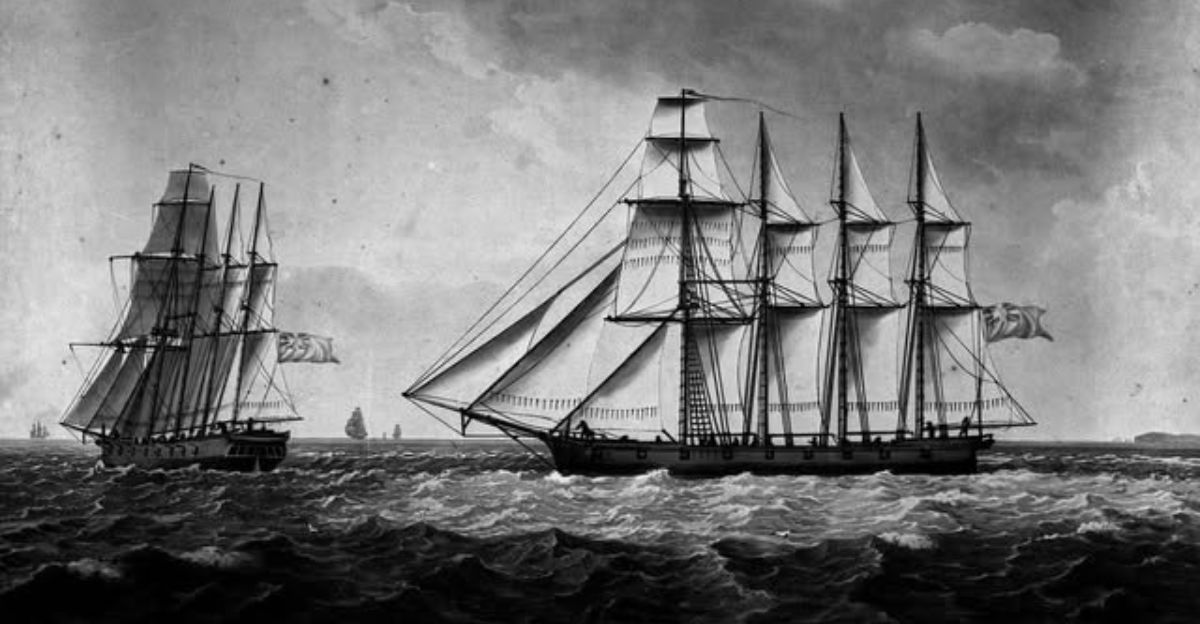
HMS Hind was sent to the front lines of imperial conflict, starting with conflicts in North America during the Seven Years’ War. Later, the Hind sailed the perilous transatlantic routes, escorting convoys and safeguarding British interests during the American Revolutionary War.
According to the Independent, “Its military career saw it play a part in the expansion — and contraction — of the British Empire. It helped Britain wrest control of Canada from France during the sieges of Louisbourg and Quebec in the 1750s.”
The Earl of Chatham

This historic ship was launched in 1749 in Chichester, England, as a 24-gun sixth-rate frigate. The HMS Hind began its career in the midst of the 18th-century conflict, helping with major sieges of Louisbourg and Quebec during the French and Indian War.
Later, it was used to safeguard British cargo and intercept enemy privateers in hazardous Atlantic convoys. After being decommissioned in 1784, the vessel was sold to a London merchant, renamed the Earl of Chatham, and repurposed as a whaler during the boom in Arctic whaling before meeting its fate in 1788.
The Role of Dendrochronology

After discovering the ship, researchers used tree-ring dating to date it and accurately determine its true origins. Specialists at Dendrochronicle took forensic samples from 19 oak timbers for further research. When their tree rings were analyzed, the results revealed that some of the trees were felled between 1748 and 1762, with a few possibly cut as late as the 1780s.
The wood’s growth patterns matched oak from the south and southwest of England, far from Orkney’s shores. These findings helped researchers establish where the ship came from.
Historical Detective Work
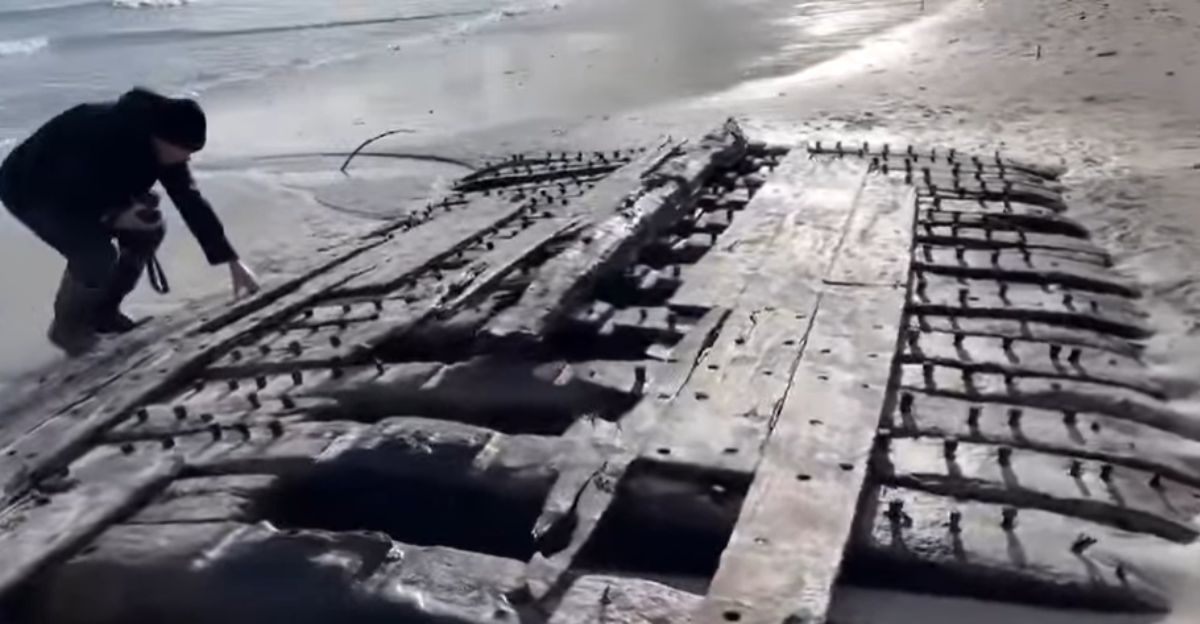
Once the ship’s massive oak timbers were exposed, professional archaeologists teamed with local volunteers and historical groups to unlock the wreck’s secrets. They cross-referenced the timber data with meticulously kept shipbuilding registers, construction techniques, and ship dimensions, gradually ruling out only one candidate.
End of Service
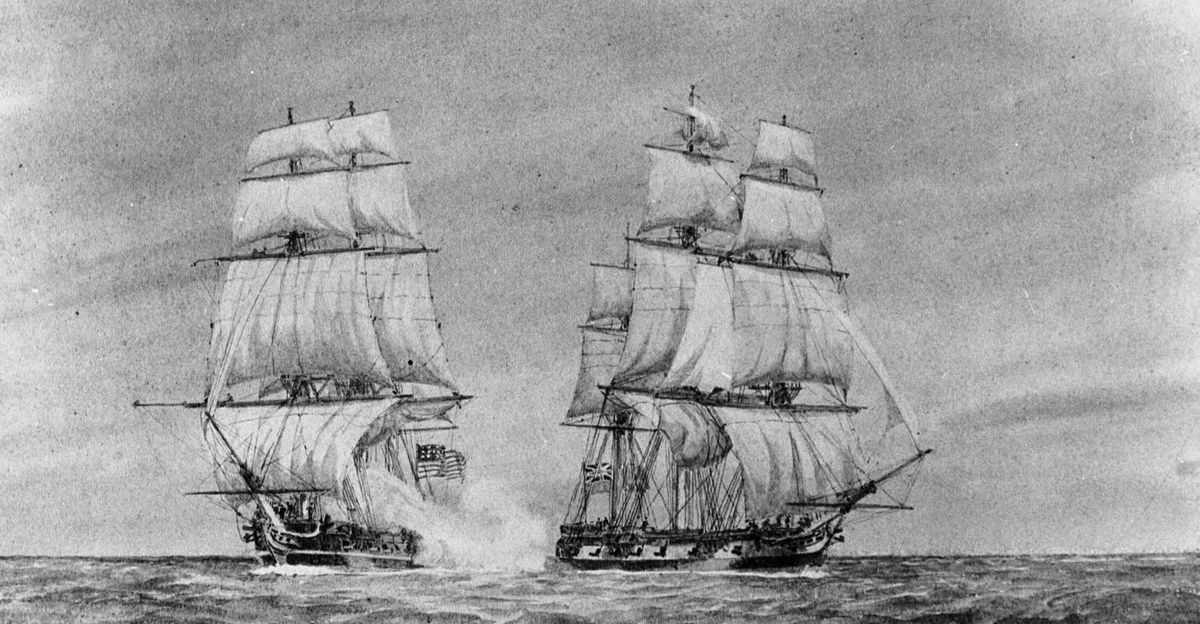
After the war, the ship was decommissioned in 1784, sold to a London merchant, renamed the Earl of Chatham, and began four grueling seasons of Arctic whaling. Under the expert command of William Brown, the ship endured four dramatic Arctic seasons, from 1784 to 1787, successfully bringing home 19 bowhead whales and hauling over 350 tonnes of blubber.
The Storm of 1788
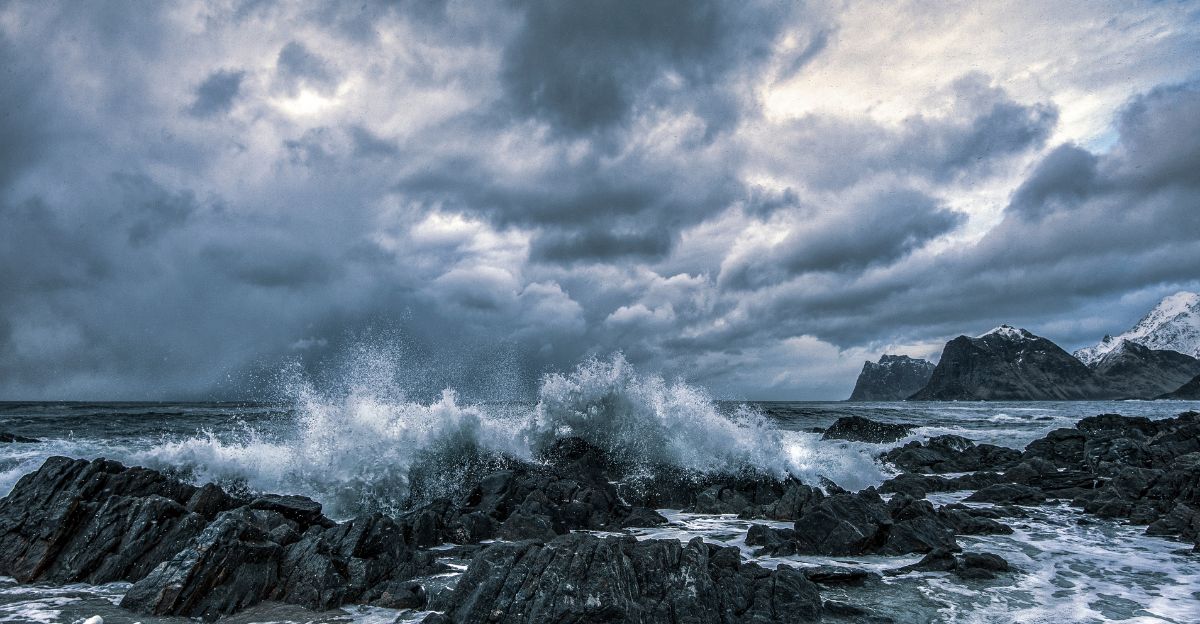
In 1788, at the hands of Captain Paterson, the Earl of Chatham never reached the Greenland Sea. According to records, gale-force winds and roiling seas drove the vessel onto Sanday’s notorious shoals. In a scene repeated often through Orkney’s maritime history, all 56 crew members were miraculously saved, with the island’s residents quickly mobilizing to aid the stranded sailors.
Sanday’s Legendary Hospitality

For centuries, the island’s isolated position and tempestuous seas have made it a recurring destination for mariners in distress, with more than 270 wrecks recorded along its coastline since the 1400s. Yet, while the waters are unforgiving, the local community has always been renowned for its generosity and care toward shipwrecked sailors and stranded travelers.
Preserving the Timbers

After the wreck’s dramatic appearance on Sanday’s shore, archaeologists and local volunteers kept the timbers moist by wrapping them in damp sheets and regularly watering them, which helped stave off decay caused by rapid drying. Thanks to a grant from the National Heritage Memorial Fund, the timbers were soon transferred to a custom-built, 8-meter stainless steel freshwater tank at the Sanday Heritage Centre.
The tank allows conservationists to stabilize the remains over the next few years while further research and analysis continue.
A “Lucky Ship”
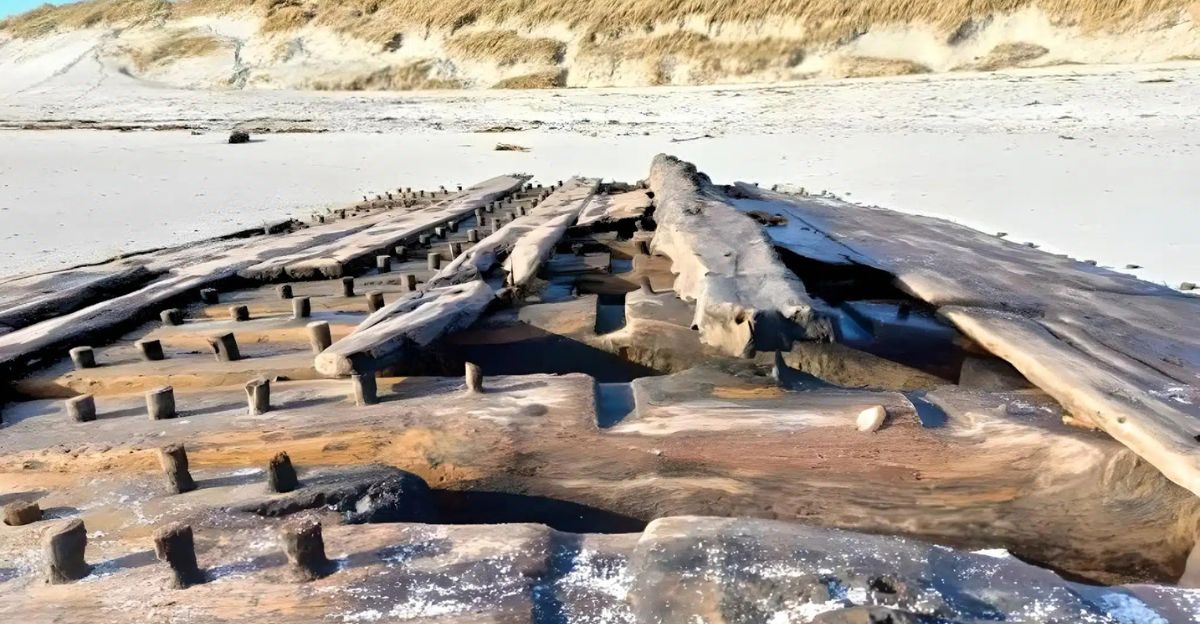
Marine archaeologist Ben Saunders coined a phrase that became the project’s mantra: “I would regard it as a lucky ship, which is a strange thing to say about a ship that’s wrecked.” Even in the very end, this ship was seen as lucky, as very few shipwrecks end with the survival of all crew members on board.
Orkney’s Relentless Sea

Atlantic swells, shifting sandbanks, and fierce, unpredictable storms have shaped these dangerous waters, making them some of the most treacherous in Europe. The notorious Pentland Firth, separating Orkney from the Scottish mainland, is infamous for tidal currents reaching up to 16 knots and creating some of the biggest waves.
Over centuries, these waters have claimed more than 1,200 recorded shipwrecks.
Displays in a Museum
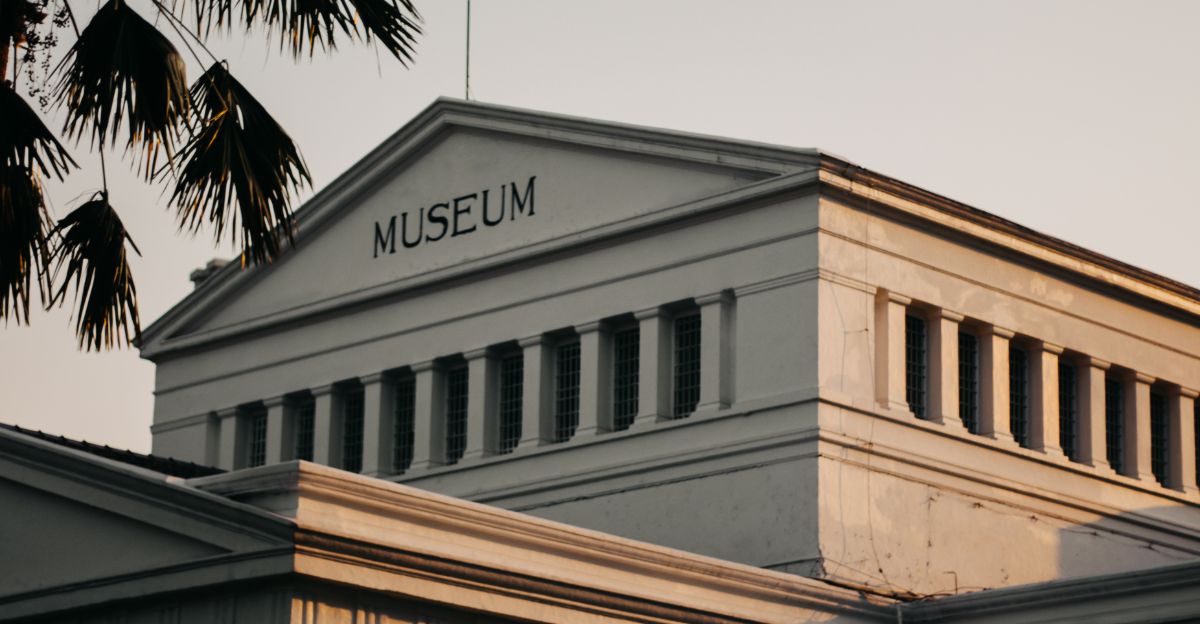
The salvaged timbers of the Earl of Chatham can be found in a specially designed freshwater tank outside the Sanday Heritage Centre. Locals and tourists can see first-hand how similar findings are preserved for future generations.
A Proud Community

The finding of this shipwreck has been of great value to island residents and a way to bring community members together in celebration. “It has been a wonderful team effort so far between many and one we’re proud to have been a part of, and will continue to be as we support the Sanday community explore the future possibilities for their wreck,” said Nick Hewitt, Culture Team Manager for Orkney Islands Council.
An Invitation to Visit

Sanday’s story of the Earl of Chatham has become more than just a tale of maritime history; it’s an open invitation for visitors to step into the island’s living heritage. The Sanday Heritage Centre warmly welcomes travelers to witness the preserved timbers and explore the exhibits that bring centuries of seafaring drama to life.
The Enduring Power of the Sea

While the ocean might look calm from afar, it’s easy to underestimate its true power. The Earl of Chatham’s journey is a stark reminder that no vessel can ever truly conquer the sea, no matter how sturdy or storied. The sea’s relentless presence continues to define Sanday, ensuring its people remain as attuned to its moods today as their ancestors were centuries ago.